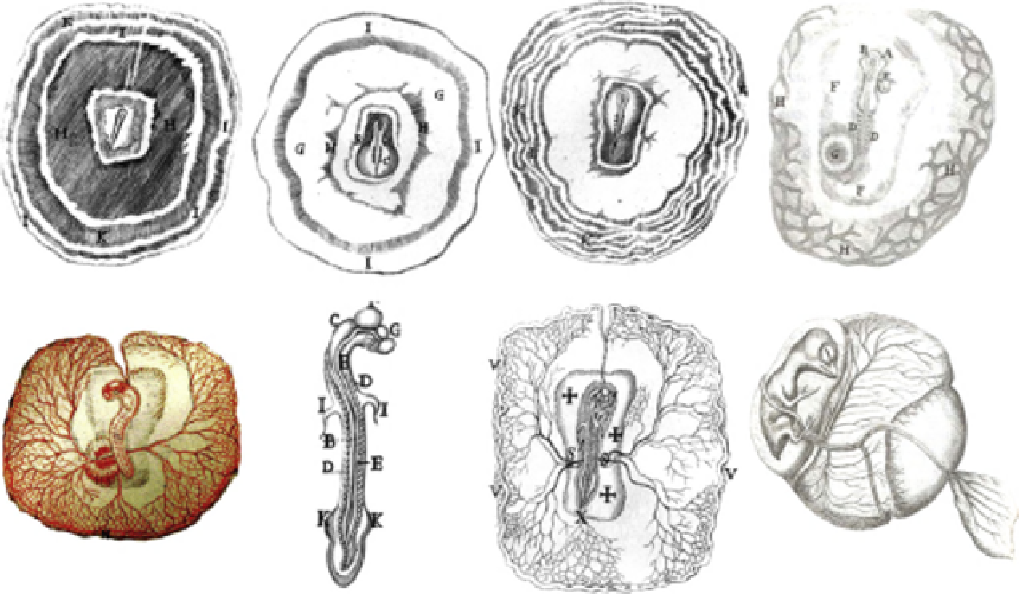Biology Reference
In-Depth Information
of a complete set of chromosomes in every cell, and second,
that each chromosome independently carries different
hereditary information. Two decades later, when Wilson
was writing the topic from which the above quote comes,
he still regarded Boveri's polyspermy experiment as the
keystone of all the evidence by then accumulated for
genomic control of development, even though, from 1910
on, Morganian genetics had provided multiple examples of
specific gene mutations that produced specific (develop-
mental) phenotypes. It was clear, and explicitly stated by
Wilson
[1]
, that the genome is an informational system
resident in the many chromosomes of each nucleus; that
indeed each chromosome contains a large number of
distinct hereditary genetic components; and that develop-
ment is an outcome of the operation of this whole system.
The consequences of this most fundamental aspect of the
developmental process were not really faced during the
succeeding decades of 20th century single-gene develop-
mental genetics and single-gene developmental molecular
biology, and in many quarters have still not been absorbed.
For it is necessary to consider and analyze the develop-
mental process in system terms; that is, to understand all (or
most) of the causal interactions that constitute the control
system for each phase or element of the process. Only in
this way can it be determined why development works as it
does, what is the reason each event occurs where and when
it does, and how this relates directly to the hereditary
genomic information. Framework understanding of devel-
opment can never be derived by adding together unrelated,
single gene observations.
There is an even more deeply rooted origin to systems
developmental biology, and that is the first feature of the
developmental process to be seriously described in the
earliest direct forerunners to the modern study of
embryogenesis. This feature is the manifest increase in
organismal complexity as embryonic development
proceeds.
Figure 11.1
is a reproduction of drawings of
a chick embryo from the 17th century
[9,10]
, designed
explicitly to illustrate this point. The gist of an argument
raging in the 18th and early 19th centuries was whether the
observed increase in complexity during embryonic devel-
opment simply reveals a preformed complexity resident
from the beginning in the fertilized egg, or is actually
progressively constructed de novo, a concept classically
named 'epigenesis'. Wilson understood that the hereditary
genomic information that organizes the events of devel-
opment constitutes the solution to this venerable problem:
'
.
heredity is effected by the transmission of a nuclear
preformation which in the course of development finds
expression in a process of cytoplasmic epigenesis'
[1]
. This
FIGURE 11.1
The increasing complexity of the embryo. This definitive and fundamental feature of embryogenesis was recognized as the basic
challenge for understanding development even at the dawn of modern bioscience. The drawings of a developing chick embryo as seen through
a microscope are reproduced fromMarcello Malpighi's 1686 Opera Omnia
[10]
, except for the dorsal view in color which was published by him in 1673 in
Dissertatione Epistologica de Formatione Pulli in Ovo
[9]
.




